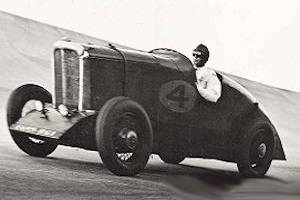These days, with rigorous prototype testing and computer-aided manufacturing, we take our cars’ reliability for granted. Carmakers have every confidence their products will last. It was very different in the early 1930s, when human error meant that few cars-and roads-could be entirely depended upon. In this environment, Citroën decided to prove the longevity of its products.

Citroën Petite Rosalie 1933
- YEAR REVEALED 1933
- PLACE OF ORIGIN Paris, France
- HISTORICAL STATUS speed record car
- ENGINE four-cylinder, 89ci (1,452cc)
- MAXIMUM POWER 32bhp
- LAYOUT front-mounted engine driving the rear wheels
- BODYWORK two-seater roadster
- TOP SPEED 70mph (113kph)
- NUMBER BUILT one
Its smart new 8CV Rosalie model made its debut at the 1932 Paris motor show, with an up-to-the-minute unitary-construction body and a 89ci (1,452cc) engine, advertised as “floating power.” Citroën arrived at the Montlhéry race track in 1933 with a special 8CV. It was called “Petite Rosalie” thanks to its cut-down, skimpy two-seater body. The idea was to see how far the car could be driven, non-stop, with a team of drivers.
The car ran for 133 days and nights, and only stopped when it had covered over 186,000 miles (300,000km). This incredible total-120,000 laps at an average speed of 58mph (93kph) brought Citroën enormous publicity. Petite Rosalie also broke or established 300 other records. Before long, the name Rosalie became a byword for dependability.